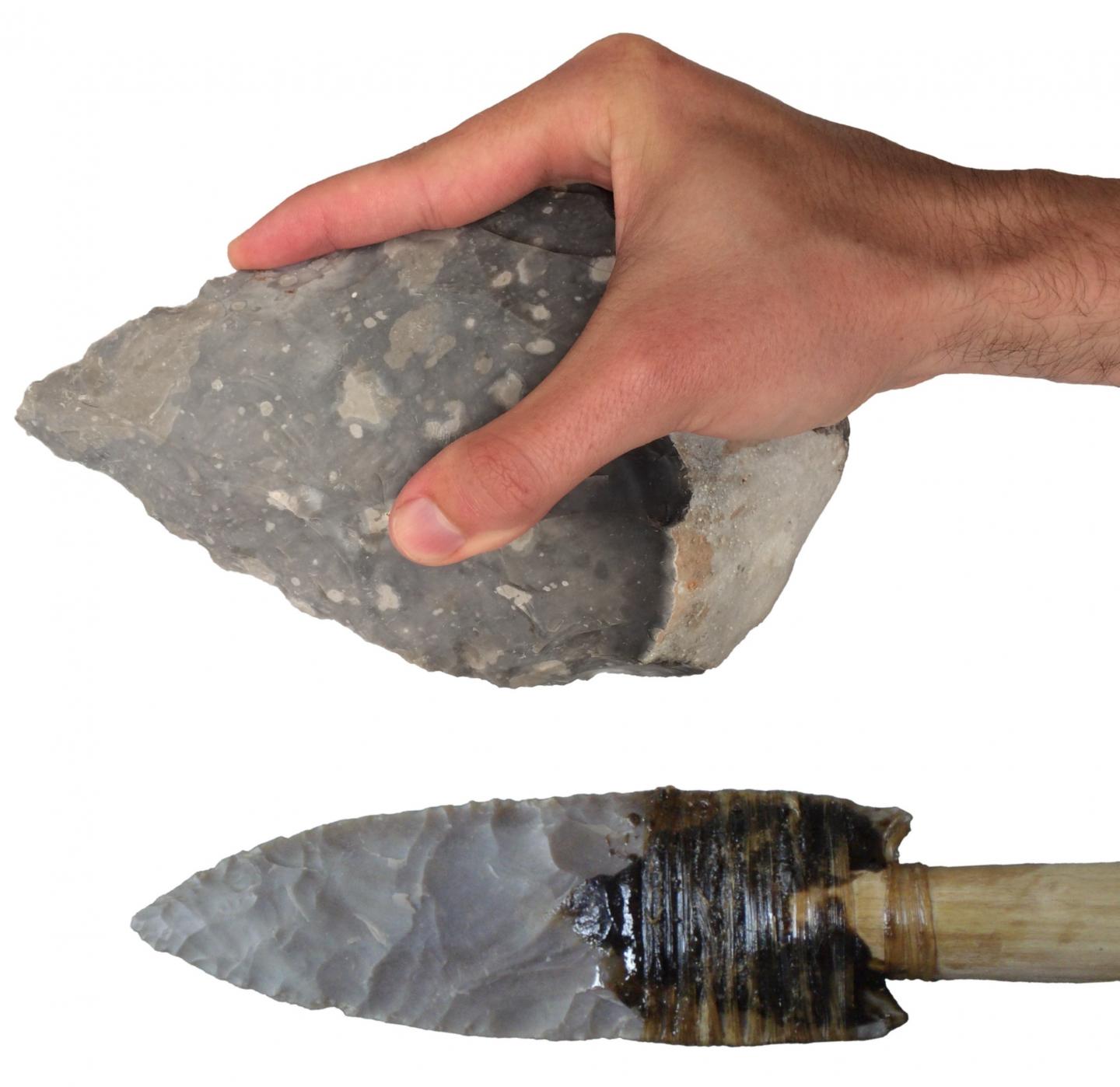The technique is called 'platform preparation' - preparing a striking area on a tool to remove specific stone flakes and shape the tool into a pre-conceived design - and without the ability to perform highly forceful precision grips, our ancestors would not have been able to produce advanced types of stone tool like spear points.
Platform preparation is essential for making many different types of advanced prehistoric stone tool, with the earliest known occurrence observed at the 500,000-year-old site of Boxgrove in West Sussex, UK.

Comparison between a Handaxe and a Clovis Point.Credit: Alastair Key and Metin Eren
Using sensors attached to the hand of skilled flint knappers (stone tool producers), the researchers were able to identify that platform preparation behaviors required the hand to exert significantly more pressure through the fingers when compared to all other stone tool activities studied.
The research demonstrates that the Boxgrove hominins (early humans) would have needed significantly stronger grips compared to earlier populations who did not perform this behavior. It further suggests that highly modified and shaped stone tools, such as the handaxes discovered at Boxgrove and stone spear points found in later prehistory, may not have been possible to produce until humans evolved the ability to perform particularly forceful grips.
This discovery is particularly important because human hand bones rarely survive in the fossil record.





Comments